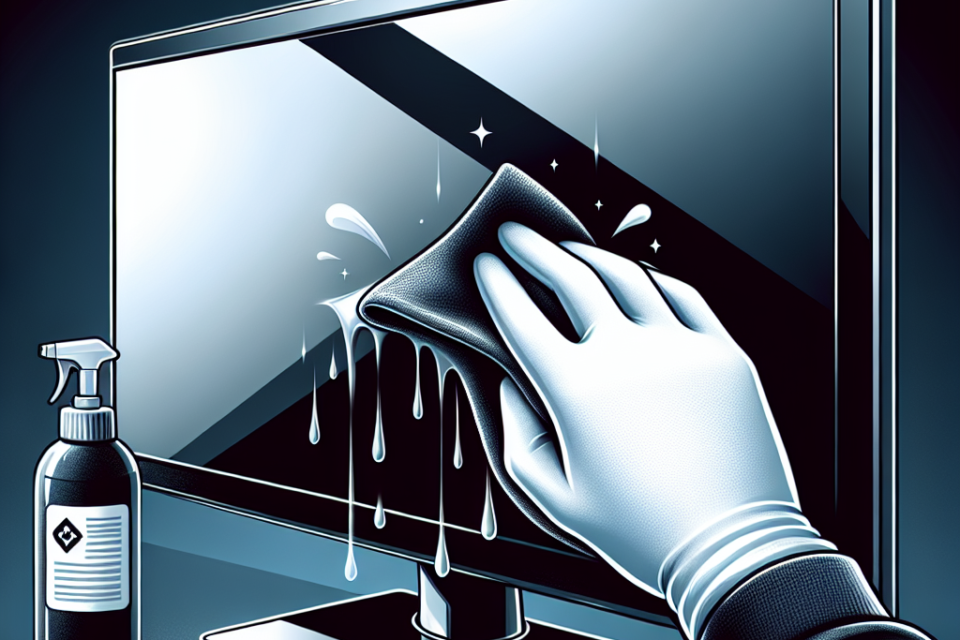How do I clean a plasma monitor screen?

Keeping your plasma monitor screen clean is essential for maintaining clear, vibrant displays and prolonging the life of your device. However, improper cleaning methods can result in permanent damage to the screen. This article provides a detailed guide on how to clean a plasma monitor screen safely and effectively.
Understanding the Anatomy of a Plasma Monitor
Before diving into the cleaning process, it is crucial to understand the components of a plasma monitor. This knowledge will help you avoid certain areas and methods that might compromise the monitor. Plasma screens are composed of several layers of glass with pixels filled with noble gases. These screens are delicate and require specific cleaning techniques.
| Component | Description |
|---|---|
| Display Panel | The main screen where images and videos are displayed. |
| Protective Glass | A layer of glass that shields the display panel from external damage. |
| Bezel | The frame around the screen that holds it in place. |
| Ports | Connectors for cables and other peripherals. |
Materials Needed
To clean a plasma monitor screen, you will need the following materials:
- Microfiber cloth
- Distilled water
- Isopropyl alcohol (optional)
- Soft, lint-free cloth
- Compressed air (optional)
- Cleaning solution (commercially available for screens)
Microfiber Cloth
Microfiber cloths are designed to attract and hold dust and dirt without scratching the surface. They are ideal for cleaning delicate screens.
Distilled Water
Using distilled water helps avoid streaks and residue that tap water might leave due to its mineral content.
Isopropyl Alcohol
A small amount of isopropyl alcohol can be mixed with distilled water to enhance cleaning power. However, it should be used sparingly.
Step-by-Step Cleaning Guide
Follow these steps to clean your plasma monitor screen:
Step 1: Turn Off the Monitor
Ensure the monitor is turned off and unplugged. This will prevent any electrical damage and make it easier to see smudges and dust.
Step 2: Dust with Compressed Air
If your monitor has accumulated a significant amount of dust, use a can of compressed air to gently blow away the particles. This step is optional but recommended.
Step 3: Wipe with a Microfiber Cloth
Gently wipe the screen with a dry microfiber cloth to remove loose dust and debris. Move the cloth in a circular motion to avoid streaks.
Step 4: Prepare Your Cleaning Solution
If using a commercial cleaning solution, follow the instructions on the label. For a homemade solution, mix equal parts distilled water and isopropyl alcohol in a spray bottle.
Step 5: Apply the Cleaning Solution
Lightly spray the cleaning solution onto a soft, lint-free cloth. Avoid spraying directly onto the screen as excess liquid can seep into the corners and damage the internal components.
Step 6: Wipe the Screen
Using the dampened cloth, gently wipe the screen in a circular motion. Focus on smudged areas but do not press too hard.
Step 7: Dry the Screen
After wiping, use a dry microfiber cloth to remove any remaining moisture and prevent streaks.
Step 8: Clean the Bezel and Ports
Don’t forget to clean the bezel and ports. Use a damp microfiber cloth for the bezel and a cotton swab for the ports.
Additional Tips and Precautions
Here are some important tips to ensure effective and safe cleaning:
- Always use a clean, dry microfiber cloth.
- Avoid using ammonia-based cleaners as they can damage the screen.
- Do not apply excessive pressure while cleaning.
- Do not use tap water due to its mineral content.
- Regularly clean your screen to avoid the buildup of dust and grime.
Conclusion
Cleaning your plasma monitor screen properly is crucial for maintaining its longevity and ensuring a clear display. By following the guidelines and steps outlined in this article, you can keep your screen in pristine condition. Remember to use appropriate materials, take necessary precautions, and clean your monitor regularly for the best results.
